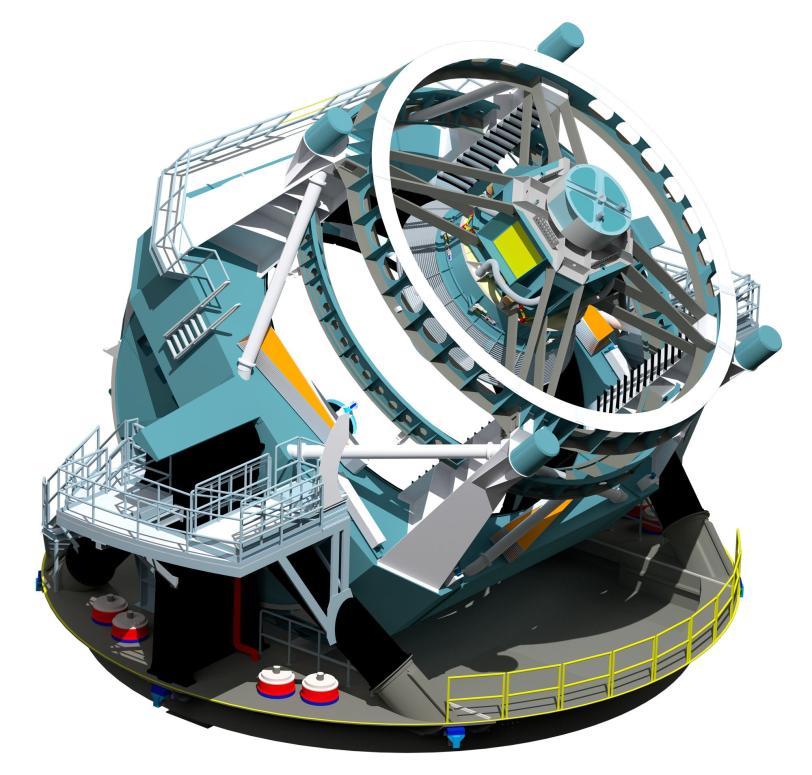NSF: Large Synoptic Survey Telescope Approved to Advance to Final Design Stage
from the National Science Foundation
from the National Science Foundation
The Large Synoptic Survey Telescope (LSST) just received another boost. The National Science Foundation announced that it has received the go-ahead from the National Science Board to advance the giant telescope to the final design stage.
The NSF is building the telescope in partnership with the Department of Energy, which is providing its digital camera – the largest in the world, with 3.2 billion pixels. SLAC is leading the camera design, and in April, the DOE gave Critical Decision 1 (CD-1) approval for the camera project, clearing the way for its detailed engineering design, schedule, and budget phase.
The National Science Board's OK means the NSF director can now include funds for its part of the project – construction of the telescope itself, along with its site on a mountaintop in Chile – in a future budget request.
"CD1 approval assured us we could go ahead with the camera," said SLAC's Steve Kahn, who is LSST project leader at SLAC and deputy director of LSST. "But that was always assuming the NSF moved forward as well. Now we know the project as a whole can move forward."
The National Research Council’s Astronomy and Astrophysics decadal survey, Astro2010, ranked the LSST as the top ground-based priority for the field for the current decade.
The LSST will survey the entire visible southern sky every week, creating an unprecedented public archive of data – about 6 million gigabytes per year. That's the equivalent of shooting roughly 800,000 images with a regular eight-megapixel digital camera every night, but LSST images will be of much higher quality and scientific value.
Its deep and frequent cosmic vistas will help answer critical questions about the nature of dark energy and dark matter and aid studies of near-Earth asteroids, Kuiper belt objects, the structure of our galaxy and many other areas of astronomy and fundamental physics.
"We've been working on this project since 2003," Kahn said. "It's nice to see it move ahead like this."
Read the full NSF announcement.

(Image courtesy of LSST Corporation)